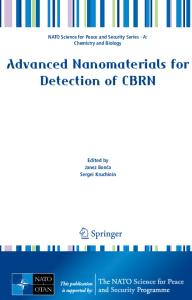A Phase-Field Model for Phase Transformations in Glass-Forming Alloys
- PDF / 438,179 Bytes
- 7 Pages / 593.972 x 792 pts Page_size
- 64 Downloads / 365 Views
ION
WITH extensive potential applications arising from a remarkable range of mechanical, physical, and chemical properties, the growing class of metallic alloys continue to generate scientific and technological interest; these alloys are known as bulk metallic glasses (BMGs) because they can be quenched to glassy solids in relatively thick sections. New BMG alloy development has relied heavily on experimental exploration, and the attempts to correlate glass-forming tendency with fundamental thermodynamic properties have not led to a predictive ability in any general sense.[4–7] As a complement to the experiment, computational methods may offer powerful avenues for studying glass formation and other properties of glass-forming alloys.[8] Indeed, both classical and ab initio molecular dynamics (MD) methods have provided substantial fundamental gains related to the structural aspects of the glass transition along with insights into the influence of alloy chemistry on the glass-forming tendency in several alloy systems (e.g., Al-Mg,[9] Cu-Zr,[1,10] Ni-Zr,[11,12] Ag-Ni-Zr,[13] and Ca-Mg-Zn[14]). Focusing mainly on the short- and medium-range structure that persists over a few coordination shells, these methods have shown that the glass transition may be associated with (1) the dominance of specific noncrystalline motifs in the liquid and (2) the emergence of a fine network structure of well-ordered but noncrystalline material, where the liquid-like material is divided into small cellular volumes.[15,16] With these advancements related to the TAO WANG, Assistant Scientist, is with the Division of Materials Sciences and Engineering, Ames Laboratory, U.S. Department of Energy, Ames, IA 50011. Contact e-mail: [email protected] RALPH E. NAPOLITANO, Scientist, is with the Division of Materials Sciences and Engineering, Ames Laboratory, U.S. Department of Energy, is also a Professor with the Department of Materials Science and Engineering, Iowa State University, Ames, IA 50011. Manuscript submitted April 30, 2011. Article published online March 24, 2012 2662—VOLUME 43A, AUGUST 2012
atomistic nature of the glass transition as well as the thermodynamic and kinetic properties of undercooled metallic liquids, new computational methods are required to connect the basic mechanisms and properties to bulk behavior. Specifically, models are required to predict the glass transition on rapid cooling of the melt and the simultaneous competition between the various crystalline phases for which solidification may be highly driven. Such models should account for the cooling rate effects that influence strongly the atomistic structure, the related properties of the undercooled liquid, and the associated transition kinetics. The relevant length and time scales are too large for the direct application of MD methods,[17,18] and we consider in this article the application of a phase-field approach, which has been used widely to simulate many types of phase transformation at the mesoscale or microstructural level.[19,20] The characteristic feature of a ph
Data Loading...











